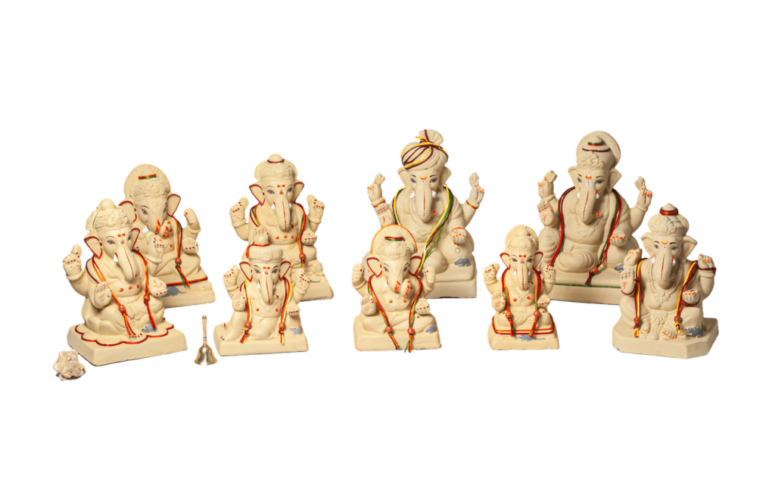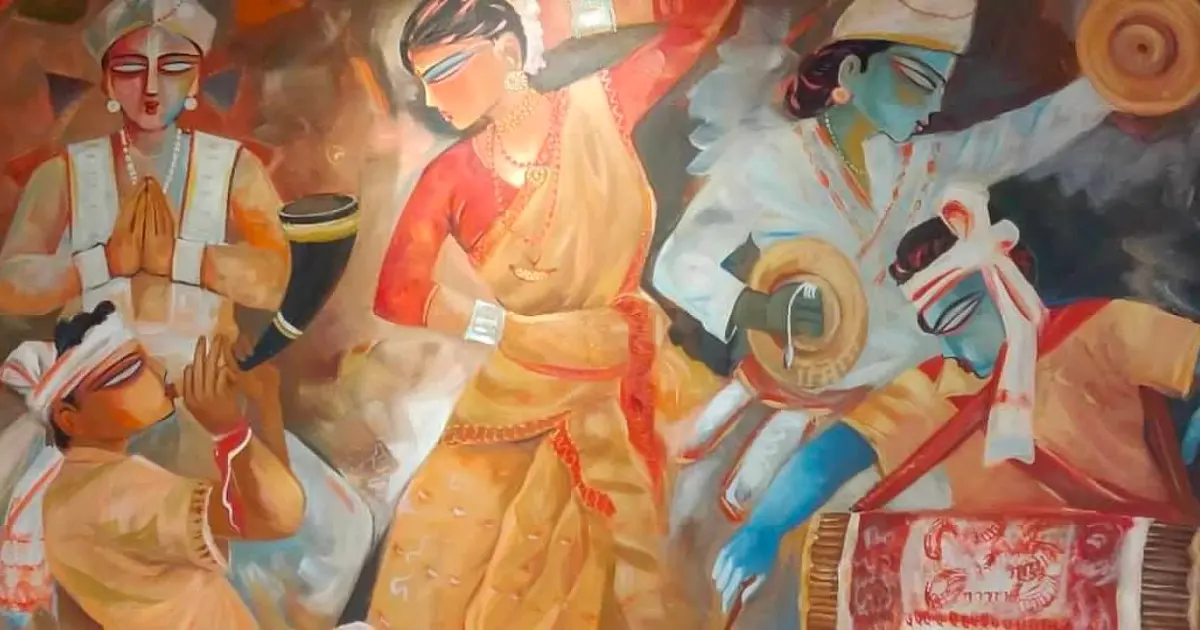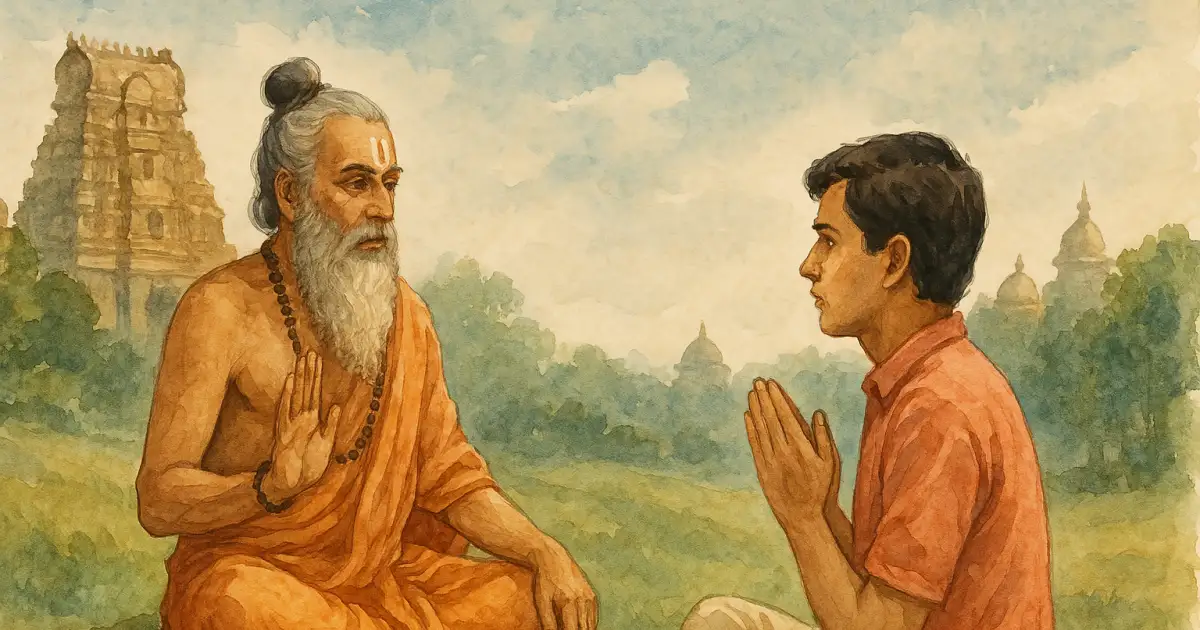The Lord of the Earth
Śrī Gaṇeśa is considered to be the deity that presides over the Earth element. Within the human body he governs the mūlādhāra, the root cakra, which corresponds to the element of Earth. In popular legend, Gaṇeśa is said to have been created by his mother Pārvatī from the dust on her own body. Nanditha Krishna in her book, ‘Ganesha - The Auspicious Beginning’ traces the possible connections of this deity to pre-Vedic indigenous communities that worshipped animals and Nature. She conjectures that the Gajas, a subsect of the Nāgas, gave him the rotund form with the elephant head. She also points out that he was considered to be a God of harvest by agricultural communities in South India where some of the earliest icons are seen. The presence of the mouse and the snake along with his human body, also indicate links to the ecosystems that support farmers, as they need to appease them to keep the ecological balance.
These and other aspects of Gaṇeśa indicate a strong connection to Nature and the Earth. Yet there could also be a deeper significance in the rituals involved in his worship during the festival of Gaṇeśa Caturthī. A reminder of the fundamental principles on which all of life is based, that of circularity.
“आब्रह्मभुवनाल्लोका: पुनरावर्तिनोऽर्जुन |”
“In Nature, all things undergo growth, dissolution and renewal.”
(Bhagavad Gīta. Chapter 8. Verse 16)
This śloka in the Bhagavad Gīta is a reminder that there is an inherent circularity in Nature, in the way the life force moves through all of Nature's creations. Soil, is at once, the result of the biodegradation of life forms and yet is the source of all life through the fertility that it possesses. Agrarian communities recognise, acknowledge and worship the fertility of the soil and it is perhaps here that the festival of Gaṇeśa Caturthī has its origins.
Following the varṣā ṛtu, the rivers deposit sediments of fertile soil on their banks. This soil is collected by farmers and brought home to be worshipped for a few days. Then, pregnant with their prayers and saṅkalpas, the soil is returned to the river where it merges once again with the Earth. The flowing waters carry their prayers for well-being and abundance forward to connect communities that live along its banks.
This ecological interpretation of the possible origins of the Gaṇeśa festival was offered by Śrī Vivek Godbole, a scholar of the Kṛṣṇa Yajur Veda and head of a vedapāthaśāla in Satara.
Visarjana : Dissolution for Emergence
The final step of the festival is the act of immersion, known as visarjana. Embedded in this ritual is an understanding that life is cyclical and that one has to let go of attachments to allow the flow of life to return. The word visarjana has its Sanskṛta roots in the term sṛj which is also the root of the word sṛjana. Visarjana simultaneously means dissolution and emergence, emphasising that these are not two separate opposing phenomena. Emergence requires the act of dissolution in a cyclic process. Soil is the best example of this in Nature.
Yet today, most people celebrating Gaṇeśa Caturthī do not know the ecological significance of it. The form of Śrī Gaṇeśa evolved over the original worship of the soil and has slowly replaced the importance of the soil altogether. Traditionally, the mūrti was sculpted by the worshippers themselves, yet today, it has become a booming industry. The tradition of sculpting Gaṇeśa mūrtis from clay was slowly replaced by the use of industrial materials such as Plaster of Paris (POP) and chemical paints. These impact the ecosystem negatively after they are immersed. Marine life dies from the toxic heavy metals in chemical paints and it is not unusual to see schools of dead fish floating in a lake or river in the days following the immersion of the POP mūrtis.
How can one restore the sanctity of the festival as well as the sanctity of Nature herself?
Going back to its original circularity, the first step is for us to become conscious of the materials we use in the festival and the impact these may have on the natural environment. The psychological power of the visarjana ritual is that when you watch something dissolving in front of your eyes and flowing away, something within you gently lets it go. You are reminded of the vastness of Nature and learn to trust her processes. You learn to observe and respect circularity and develop the faith that even though you may not see the entire cycle, it definitely exists.
This does not happen when the materials we use are non-biodegradable - they do not return to Nature and her original essence.
There are a number of materials emerging that can offer an alternative to Plaster of Paris (POP) and chemical paints. Soil is the most familiar of these and therefore the return to the use of soil is easiest for all of us. However, the unregulated mining of soil - be it clay or topsoil - creates its own ecological impacts. Taking soil from one ecosystem and depositing it in another also can be damaging to ecosystems. Here is the simplest way you could celebrate this festival consciously:
- Make your own Gaṇeśa at home using local soil
- Worship Śrī Gaṇeśa as the Lord of the Earth with a prayer for the sanctity of the soil
- Immerse it at home in a clean pail of water
- Collect the soil you have used and return it to where you took it from
You can also use a permanent mūrti and as you perform your worship, place a betel nut alongside, which can be immersed after the worship is over.
Valuing impermanence
The Kumbhar community in Maharashtra that works with clay has a deep respect for the soils they work with. The artisans of this community who are now mostly producing functional foodware and other items, also carry on a legacy of sculpture and during the Gaṇeśa season they sculpt the most stunning Gaṇeśa mūrtis from soil.
Knowing fully well that the work of art they are creating will be ultimately dissolved, they still spend days sculpting forms of Gaṇeśa with widespread creativity. The art of working with natural and biodegradable materials by hand, has to be understood to be appreciated, as it involves much risk and damage.
The mūrtis they are crafting are not expected to last forever, and in this impermanence they carry an important message. A reminder that while beauty and creativity is important to a culture, one need not be attached to the form this beauty takes. Knowing that Nature is abundant and always provides for everyone's needs, we respectfully return what we have taken from her, in this case, the soil.
Rebirth
The Punarāvartan campaign aims to return circularity to Indian festivals, to ensure that none of the materials used in the festivals create waste and that natural resources are conserved and reused with respect.
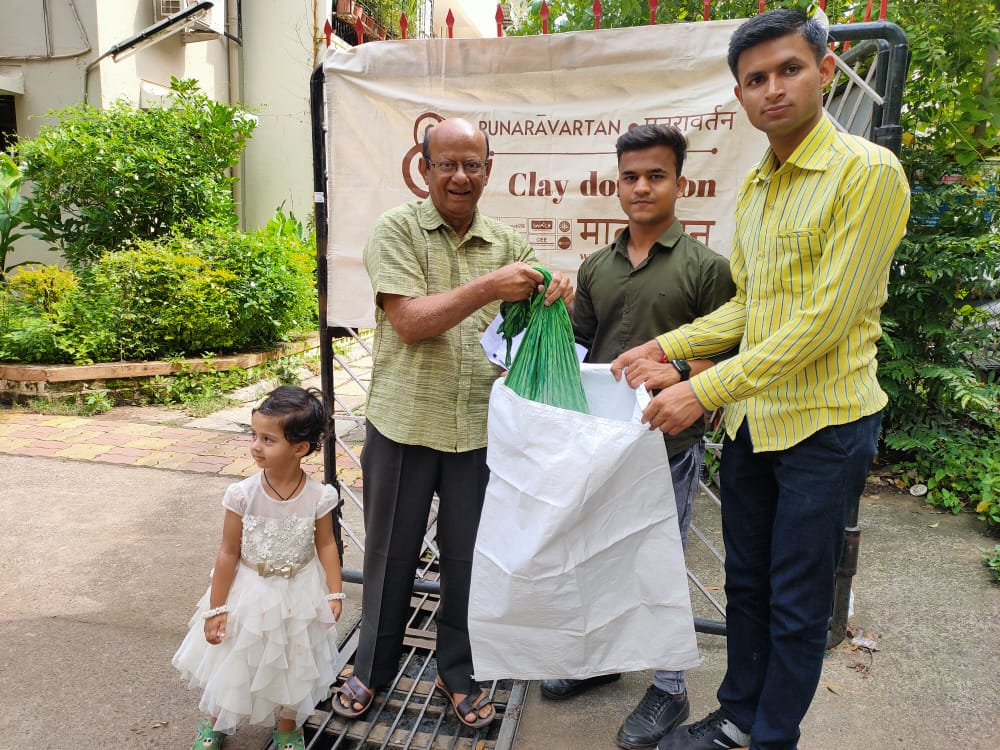 Clay donation drive by eCoexist Foundation’s Punarāvartan campaign
Clay donation drive by eCoexist Foundation’s Punarāvartan campaign
Specifically in the festival of Gaṇeśa Caturthī, it addresses the problem caused by the immersion of lakhs of mūrtis into natural water bodies creating pollution. It encourages the use of natural soils (shaadu maati) and the immersion at home of such mūrtis. The clay sludge can then be collected and returned to the artisans who can reuse it endlessly.
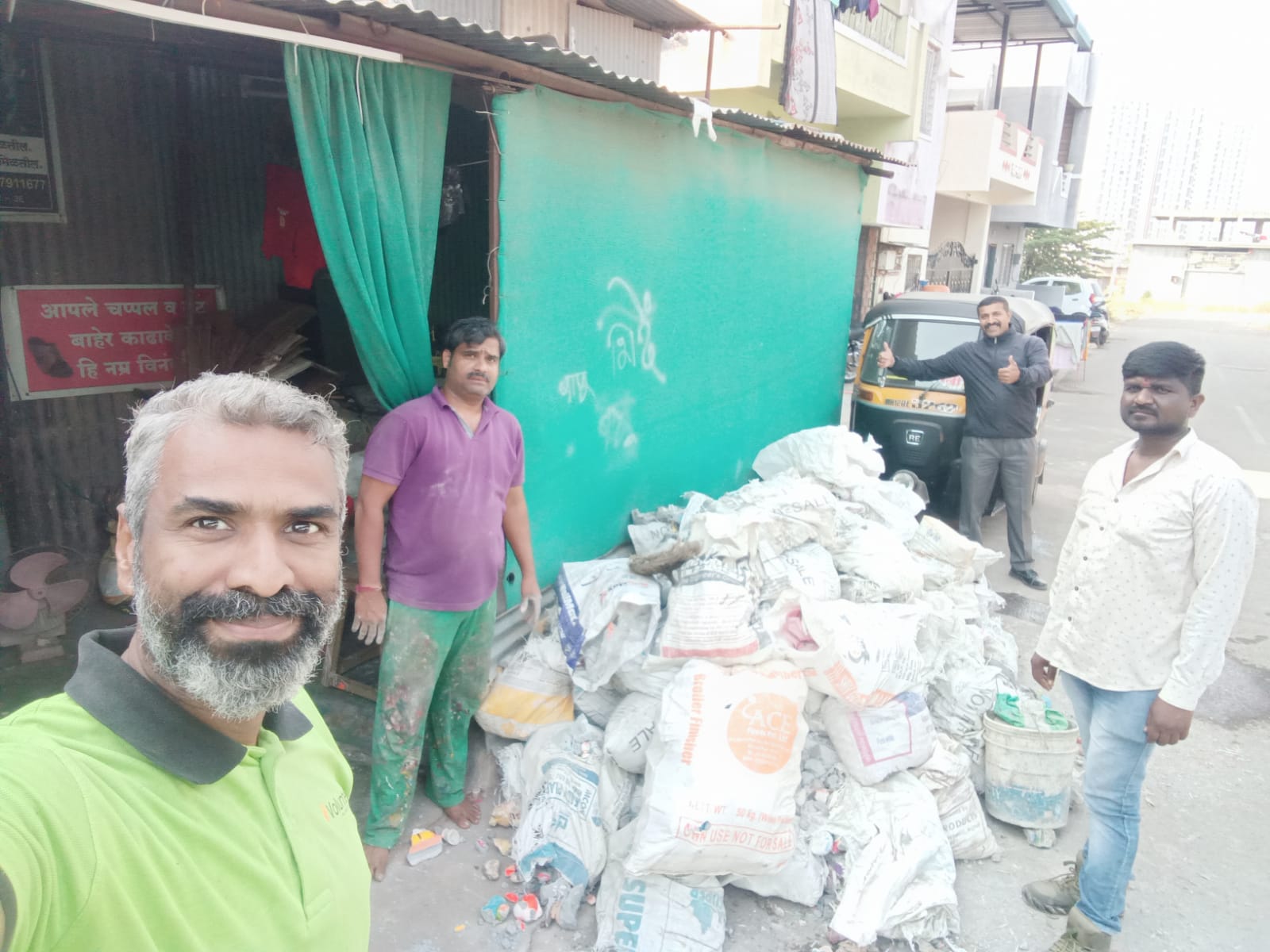 Distribution of clay sludge to artisans by eCoexist Foundation’s Punarāvartan campaign
Distribution of clay sludge to artisans by eCoexist Foundation’s Punarāvartan campaign
This achieves two things: firstly, it prevents the immersion of mūrtis into natural water bodies and secondly, it conserves the clay, which is a non-renewable resource that is rapidly depleting, and loops it back into the supply chain.
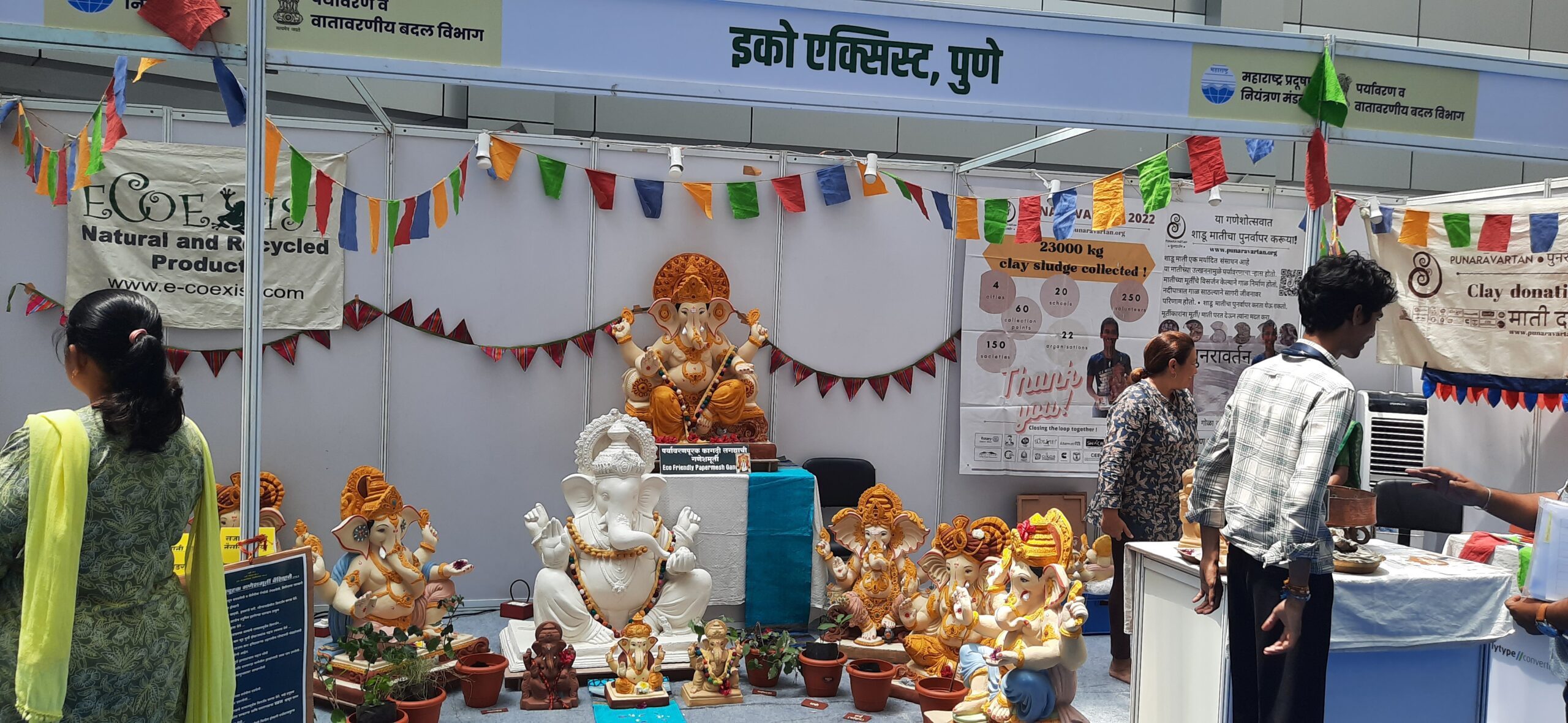 Stall by eCoexist Foundation to showcase innovative solutions for an eco friendly Ganesh Chaturthi
Stall by eCoexist Foundation to showcase innovative solutions for an eco friendly Ganesh Chaturthi
India has a rich heritage of wisdom, and a deep traditional respect for Nature and all of life. Campaigns such as Punarāvartan ensure that our rituals are true to their original intent - in this case to remind us about the importance of circularity in all our endeavours. The psychological impact of watching one's beloved mūrti dissolve back into water in the act of visarjana develops the equipoise that is needed by us when things dissolve in our lives as they always eventually do. When we celebrate ‘letting go’ collectively, we are reaffirming our belief in the cycles of Nature, and in the promise of Punar-āvartana - a rebirth once again.
A circular mindset
Yet the deeper attempt inherent in the Gaṇeśa ritual of visarjana is what it does to the psyche and our inner understanding. And once we learn to be at ease with the cyclic processes of Nature, we need to then bring this understanding to the way we live our lives and to transform our choices as consumers.
Śrī Gaṇeśa is considered the Lord of beginnings and every activity starts with a prayer to him to bless it. He is also the remover of obstacles and in this role, ensures that things flow without impediment. Yet he is also considered Anādi - the one without a beginning. This is a reminder that instead of a binary viewpoint of start and finish, he presides over the flow of energy. This flow is cyclic as it is in Nature, at a comprehensible level but infinite in its omnipresence.
Subhash Kak, explaining how ancient Indian seers understood the Universe, says that the idea of Creation was not understood as affirmation of something out of nothing. Śrī Aurobindo explains causality and creation in Nature saying, “...what has really happened is that in a certain arrangement of the current working and a certain relation of the worked out shapes of Force... a new arrangement was always potential and latent… and a particular process, that is to say a particular working (karma or apas) of the same Force, the same Life-Energy, has been used to evoke the new shape of things out of latency, out of avyakta and bring it into manifestation, into vyakta.”
This explanation applies beautifully to the Gaṇeśa ritual and festival which celebrates the circularity of the soil, knowing that it carries great potential and that we as creators only give visible form to what it carries within.
From the physical to the subtle
The potentiality of the Universe starts to express itself from the sound energy identified by ancient seers as the sound Oṃ. Śrī Gaṇeśa is also considered to be the physical manifestation of the sound Oṃ and addressed as Oṃkārasvarūpa. The visarjana ritual invites us to trace back the origin of this physical form to its formless sound energy. To surrender our attachment to the form and discover the presence of Oṃkārasvarūpa which continues within us and in all of creation.
For more information on the Punaravartan campaign, visit: https://punaravartan.org/
References
- Jagannatha, S, Krishna, N (2000). Ganesha : The Auspicious …The Beginning
- eCoexist, (2015). The natural origins of Ganesh Chaturthi: Talking to a Vedic scholar. Retrieved on 26 June 2021 from https://www.e-coexist.com/the-natural-origins-of-ganesh-chaturthi-talking-to-a-vedic-scholar/
- https://www.wisdomlib.org/definition/visarjana
- Kak, S, (2015). *The concept of the Universe as understood by ancient seers. Retrieved on 2nd August from: https://swarajyamag.com/books/the-concept-of-the-universe-as-understood-by-ancient-indian-seers
- Ghosh, A, (1980). Śrī Aurobindo Archives, Pg 43-44
